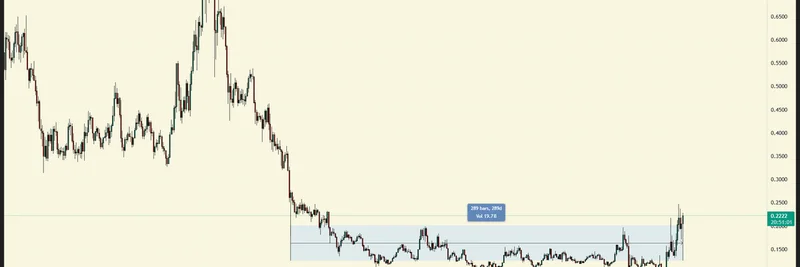If you're keeping an eye on emerging blockchain projects, you might have caught wind of the Ice Open Network and its native token, $ION. Recently, BSC News dropped a detailed analysis via a tweet from @BSCNews, breaking down everything from use cases to tokenomics. As someone who's spent years diving into crypto at CoinDesk and now focusing on meme tokens and blockchain trends at Meme Insider, I thought it'd be worth unpacking this for our readers. Even though $ION isn't your typical meme coin driven by hype and viral moments, its community-driven approach and utility features echo some of the engagement we see in meme ecosystems. Let's break it down in simple terms.
The Basics: What is $ION and Ice Open Network?
$ION is the rebranded native token of the Ice Open Network (previously known as $ICE). This blockchain platform is all about creating a deflationary on-chain economy—think of it as a system where the token's supply decreases over time as it's used, potentially increasing its value. The network supports apps like the upcoming Online+ platform and the ION Framework, which let users create content, interact, and build communities in a decentralized way.
Unlike pure speculative tokens, $ION is designed for everyday use. It's not just about holding; it's about participating in the ecosystem. This shift from $ICE to $ION was meant to boost its functionality, making it a key player in Web3—short for Web 3.0, the next evolution of the internet built on blockchain for more user control and decentralization.
Key Use Cases: How $ION Powers the Ecosystem
One of the standout parts of the analysis is how $ION integrates into real activities. Here's a quick rundown:
Blockchain Essentials: It covers gas fees (those small costs for transactions on the network) and lets you stake tokens to help secure the network. Staking is like locking up your coins to support the system, and in return, you get rewards. Plus, stakers get a say in governance—voting on network decisions.
Content and Social Features: Imagine tipping your favorite creators with $ION, where 80% goes straight to them and 20% feeds back into the ecosystem pool. You can also pay for upgrades like better analytics or boost your content's visibility. Subscriptions for premium stuff? Paid in $ION, with a similar split.
Marketing and Trading: Use $ION for ad campaigns or boosting posts. When swapping tokens in decentralized apps (dApps—apps that run on blockchain), there's a fee in $ION. Even tokenized communities (groups with their own mini-tokens) involve small $ION fees.
Referrals: Bring in new users and earn a 10% lifetime commission on their spending or revenue. That's a smart way to grow the community organically.
These features make $ION feel accessible, especially for folks new to crypto. It's turning blockchain into something practical, like social media but with built-in economics.
Tokenomics: The Deflationary Magic
Tokenomics is basically the economic design of a cryptocurrency—how it's supplied, distributed, and incentivized. $ION's model is deflationary, meaning its supply shrinks as the network grows. Here's how it works:
Every interaction in the ecosystem generates fees. Half of those fees (50%) are used to buy back $ION tokens from the market and burn them—permanently removing them from circulation. The other half rewards creators, node operators (folks running the network's infrastructure), affiliates, and communities.
This creates a "virtuous cycle": More usage means more fees, which leads to more burns (reducing supply) and more rewards (encouraging participation). It's all tied into platforms like Online+, where daily activities drive this economy. The goal? Sustainability over hype, though it still needs to overcome challenges like educating users and standing out in a crowded crypto space.
Unfortunately, the analysis doesn't dive into specifics like total supply or initial distribution, but the focus on utility suggests it's built for long-term value rather than quick pumps.
Why This Matters for Meme Token Enthusiasts
At Meme Insider, we usually spotlight tokens fueled by memes, communities, and viral trends. $ION might not have the same joke-origin story as some meme coins, but its referral system and community rewards have that same viral potential. Ice Network's mobile-friendly approach (think easy mining via apps) has built a massive user base, much like how meme tokens explode through social sharing.
If you're into meme tokens, watching projects like this can give insights into how utility can blend with community hype. It could inspire the next wave of meme coins that actually do something beyond trending on X.
Final Thoughts
The BSC News breakdown is a solid read for anyone curious about $ION's role in Ice Open Network. It highlights a token that's more about building a functional economy than speculation, which is refreshing in crypto. If you're interested, check out the full article on BSC News or follow @ice_blockchain for updates. As always, do your own research—crypto moves fast, and understanding the tech behind it is key to staying ahead.
Stay tuned to Meme Insider for more on trending tokens and blockchain insights. What's your take on deflationary models like this? Drop a comment below!

